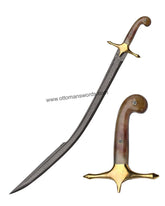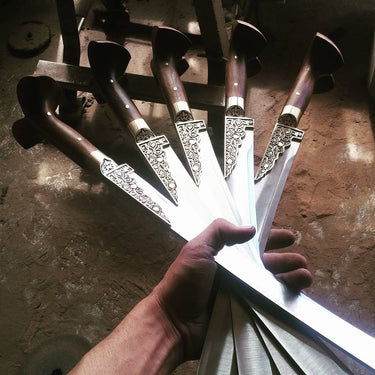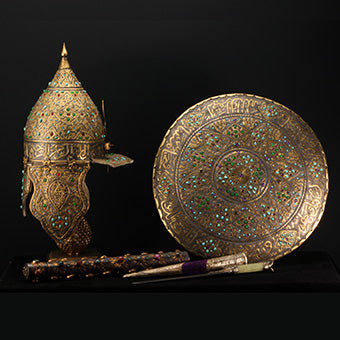The Historical Adventure of Turkish War Helmets
Helmet, which is a tool name from the root of gafr, which means "to cover, hide, protect" in the dictionary, has been used since ancient times. In wars, the head of the warrior and especially the parts of the head, neck, nose, etc., from the outside, such as swords, spears, arrows, etc. Arabs have known about the helmet, which is important in terms of protection against blows. Helmet iron, etc., which is generally considered an integral part of armor. It was made of metals or thick and durable leather. A turban was wrapped around the helmet or a cone was worn. In Arabic, the names beyza and huze are generally used for the helmet. In addition to these, words such as haydaa, devmas, rebia, imame, arme and abandonment are also mentioned.

Hz. The Prophet had two helmets called "muveşşah" and "sebûğ" (zü's-sebûğ). Two of the rings on the helmet of the Messenger of Allah (Ibn Sa'd, II, 39) who wore his armor and his helmet in the Battle of Uhud had sunk into his face and injured his cheek. In the same expedition, Ubay b. Captured the Successor's high-quality armor, sword and helmet. Hz. It is mentioned in many sources that the Prophet was wearing a helmet when he entered the city during the conquest of Mecca. Later, the helmet was among the army equipment in many Islamic states from the Middle East to Andalusia.

Some information obtained from Chinese written sources points to the importance of the use of helmets among the Turks. In fact, according to these sources, it is stated that the word "Turk" comes from "tulga" (helmet), and that the Turks took this name because they were blacksmithing on a tulga-shaped golden mountain in the Altays (Orkun, p. 28; Esin, TK, VI/70 [1968] , p. 783). Except for the helmet-like headgear in some soldier and cavalry depictions seen in North Asian rock paintings, the oldest known Turkish protective weapon finds are dated to IV-III BC. It was found during the Pazirik excavations dating back to the 16th century. Later, very similar helmets were used by the Huns, Göktürks, Uyghurs, Tatars and Mongols, and some examples of these were unearthed during the excavations. It is noteworthy that the Göktürk cavalry was surprisingly similar to the Ottoman armored cavalry in the finds. However, it is seen that some additions were made to the Mongolian helmets. IV. The Turkish tribes that entered Europe from the 19th century took their cultural assets with them. As a matter of fact, examples of helmets were also found during the excavations. There are more examples especially in today's Bulgaria, Romania, Hungary and around. Some of them are exhibited in the National Museum of Budapest.

The Turkish helmet tradition continued after Islam. In the Karakhanids, tulgas called "Işuk/yışuk" were used. In order for the metal cap not to hurt the head, the skullcap made of feathers was called a "keduk". Both written sources and descriptions show that Anatolian Seljuk helmets are the closest examples to Ottoman helmets. The information given by Ibn Bibî is in harmony with the depictions in Varaka and Gülşah, the miniature manuscripts of the Seljuk period.
It is possible to examine the Turkish helmets in three forms, with names such as "Dâvûdî helmet, tas, tolga/tulga, togulga, Dâvûdî togulga, derbendî, kallâvî, noodle, zernishani tulga, serpenah, Şirinkale, armor cone" in Ottoman records. In the first row, there are helmets in the shape of a pointed cone with a veil. After the bulging-bellied skirt part of these, a very sharp hill rises from the suddenly narrowing part. A hole is left in the middle of the prismatic bead on the crests to attach a ring. Fine cloth or feather used as a sign of rank or position was attached to this ring. However, there are also examples that are ringless and have a pointed apex. In veiled helmets, the body is slightly swollen and filled with vertical or twisting grooves. There are two eye holes on the front of the skirt. There is a nose visor that can be moved up and down between the eye sockets. A thin metal armor surrounds the hem of the helmet. A veil made of chain mesh is attached to the thin holes opened on the skirt so that it passes through this armour. The veil, which was large enough to cover the entire neck and face, leaving only the eyes exposed, could be tied over the nose or under the chin, or it could be attached to the veil hook on the helmet body from one end, leaving the face exposed.

The second group includes helmets with visors. In these, the crests are flatter, the stems are more conical, and their crests are in the form of a white sphere or cap. The skirt circumference is flat to form a wide border. There is a vertically moving nose visor on the front parts, the top part of which is usually in the shape of a heart. Helmets with visors have a total of four visors apart from the nose visor. One is a sun visor at the front, one is a nape visor at the back, and both are ear visors on the sides. Its contours were cut in sliced form, these visors made of metal sheets were attached to the front body with fixed rivets, while the others were riveted to the body with a few chain rings. Another feature of the visored helmets is the funnel-shaped crest slots fixed to the front of the body with rivets. Heron or pheasant-style bird feathers were placed inside these crest nests as a sign of rank.
In the third group, there are armor cones. Armor caps consist of a metal piece in the form of a slightly rounded disc to cover only the top of the head, and a veil that is riveted to it, covering the entire neck and face, leaving the eyes open, and descending to the shoulders. Although other helmets were worn alone, armor cones were used together with armor shirts.
Ottoman helmets, which were manufactured from metals such as iron and copper with leather and broadcloth reinforcement, gave a golden appearance to the tombak-coated copper ones. Techniques such as forging (collapse/raising), cutting, riveting, casting, chain knitting were used in the production of helmets, the main material of which is metal. In addition to the tombaking technique, metal decoration techniques such as gold, silver and stone inlay, plastering and scraping, relief, cutting/opening, inlay, sandblasting were applied in both groups, in addition to the tombaking technique. Floral, geometric and symbolic motifs peculiar to Turkish ornament art are embroidered both as borders and as closed and free compositions on the works on which certain ornament programs are applied. Inscriptions are also seen as an important element of decoration in the decoration of helmets. These are written in kufic or ta'lik calligraphy and are in the form of good wishes, expressions of praise to the sultan, basmala and verses and suras from the Qur'an.
Ottoman helmets show parallelism with the helmets of Akkoyunlu, Shirvanshah, Mamluk, Timurid and Safavid, with some minor differences. In addition, it is possible to see the features of Ottoman helmets in some examples of Russian, German, Hungarian, Romanian and Bulgarian helmets. These helmets are referred to as "Turkish type" in the literature. Although this situation is partially considered as the interaction of the Ottoman period, it must be the result of a tradition and interaction that has its roots in older dates.
Although helmets are protective weapons, they were also used as an element to increase magnificence in state ceremonies and military ceremonies with their striking appearance. Some symbolic elements on them are shaped to reveal the hierarchy, military success and rank in the ceremony. Helmets, which are evaluated within the scope of Turkish art with their materials, construction and decoration techniques, ornament programs, symbolic meanings, are distinguished from examples belonging to other cultures with these features. Helmet ca. XVII. century, and with the spread of firearms, it lost its function and disappeared.







